Learn how to make a bold and flavorful Haitian Creole tomato sauce, a versatile and spicy recipe perfect for pasta, seafood, or grilled dishes.
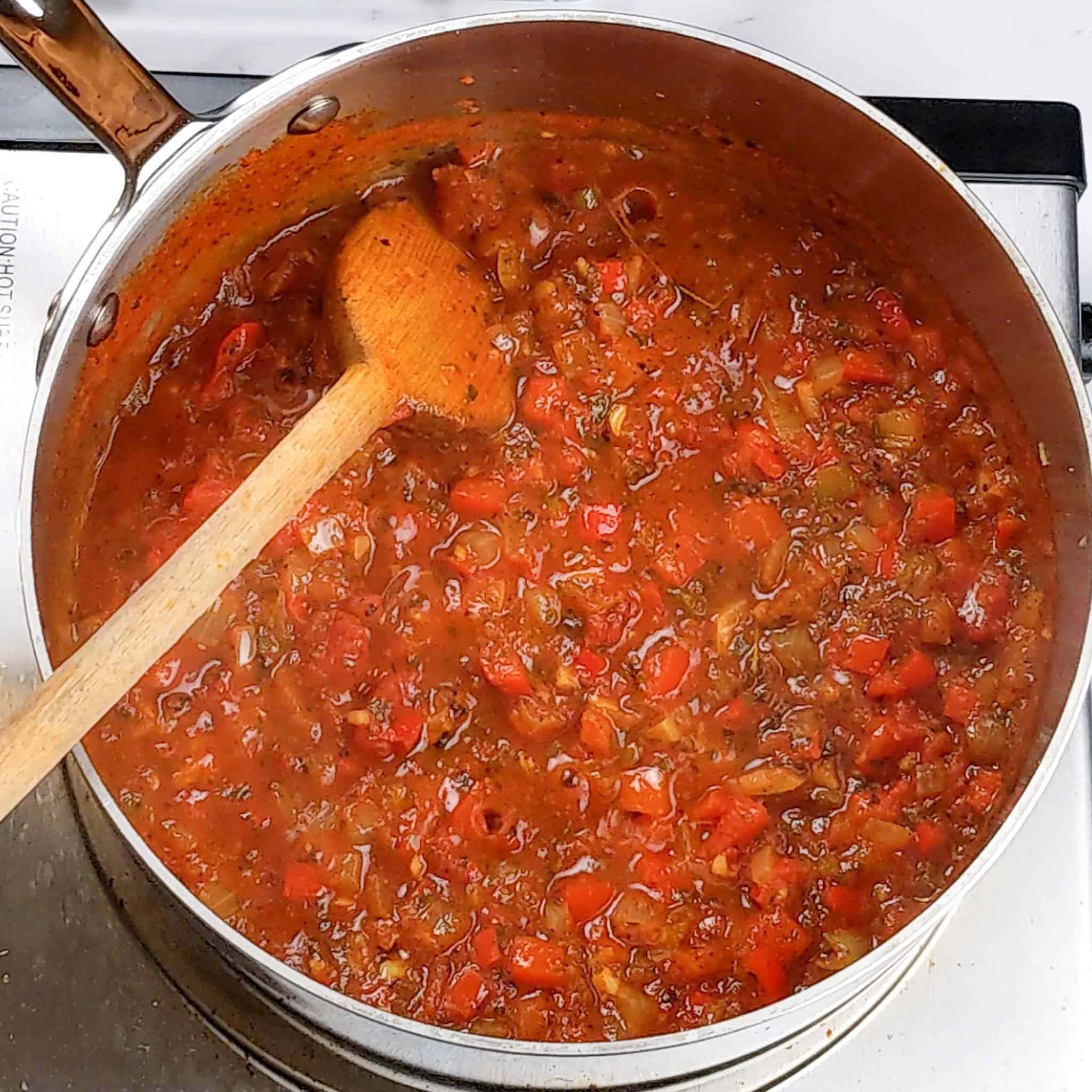
Table of Contents
Jump to:
- A Bold, Flavorful Masterpiece!
- What is Haitian Creole Tomato Sauce?
- Pairing Suggestions
- Creole Caribbean Cuisine: A Blend in History
- Food as a Historical Timeline
- Scotch Bonnet: A Caribbean Staple
- Ingredients with Steps
- Culinary Glossary
- Instructions with Pictures
- Substitutions
- Creole Seasoning vs Cajun Seasoning
- Epis Instead of the Onion, Bell Pepper, and Garlic
- Variations
- Equipment
- Storage
- Cooking Tips
- Frequently Asked Questions
- Sauce Recipes
- Haitian Recipes
- 📖 Recipe
- Subscribe to the YouTube Channel
- Have a Comment or Question?
A Bold, Flavorful Masterpiece!
Let me tell you about Haitian Creole tomato sauce-a bold, flavorful masterpiece that brings the heart of Creole cooking to your table. I adore this sauce because it's more than just a recipe; it's a connection.
It ties me to my Haitian roots and even nods to our Dominican neighbors, who whip up a similar dish that we call "espageti." Picture pasta smothered in a sauce like this, studded with smoky sausage or hot dogs, bell peppers, and onions, sometimes crowned with a boiled egg-for a Haitian breakfast, no less! It's that versatile.
If I'm dressing up pasta, spooning it over seafood, or using it as a marinade, this Creole Fire-Roasted Tomato Sauce recipe adds the right kick. So, let's get into my Haitian-rich, spicy world!
What is Haitian Creole Tomato Sauce?
At its core, Haitian Creole tomato sauce is not your average tomato sauce. It's a marriage of vibrant Caribbean ingredients with the soulful depth of Creole cooking. My addition of fire-roasted tomatoes adds a smoky richness, while scotch bonnet peppers give it a fiery kick.
Ground cloves and fresh thyme lend warmth and herbal complexity, making it stand apart from Italian or American sauces. This Caribbean Creole Fire-Roasted Tomato Sauce recipe captures the fusion of flavors from African, French, Portuguese, and Spanish influences, delivering a sauce that's bold, spicy, and unforgettable. Learn more about what makes Haitian Food what it is now in addition to making a tasty treat.
Pairing Suggestions
The beauty of Haitian Creole tomato sauce lies in its versatility. Spoon it over grilled chicken or shrimp, and you've got an instant flavor boost. Drizzle it on roasted vegetables or rice to liven up any side dish.
Feeling adventurous? Use it as a marinade for pork or as a dipping sauce for fried plantains. This Creole Fire-Roasted Tomato Sauce recipe effortlessly transforms into whatever your meal needs, making it a staple for every home cook's repetoire.
Creole Caribbean Cuisine: A Blend in History
What was the first thing that came to your mind when you heard the word Creole? Was it about New Orleans? The term "Creole" is as layered as the Haitian Creole tomato sauce itself. Rooted in the blend of African, European, and Indigenous cultures, it reflects the history of colonization and the resilience of the people who adapted to new lands.
The sauce mirrors this blending of influences with its unique fusion of ingredients. Much like Creole people and the Creole language, Creole food borrows from many sources but creates something entirely its own. This Creole Fire-Roasted Tomato Sauce recipe exemplifies that mix, showing how history and flavor come together on a plate.

Fun Fact! In Louisiana Southern Cuisine, "red gravy" is a simple but flavorful tomato-based sauce, often served over pasta as a side dish with Creole-Italian meals. It's similar to marinara but usually has a deeper flavor thanks to the addition of the "holy trinity" (bell pepper, onion, and celery) and sometimes a touch of roux for thickening. Think of it as a Louisiana-style tomato sauce with a bit more complexity!
Food as a Historical Timeline
Every dish has a story, and Haitian Creole tomato sauce is no exception. Think of food as a timeline-each ingredient, technique, and flavor tells us something about the people who created it and the time in which they lived.
This sauce speaks of trade routes, cultural exchanges, and the innovation of Caribbean cooks. The next time you taste something as bold as this Creole Fire-Roasted Tomato Sauce recipe, imagine the centuries of stories it holds and the many tables it's graced.
Scotch Bonnet: A Caribbean Staple
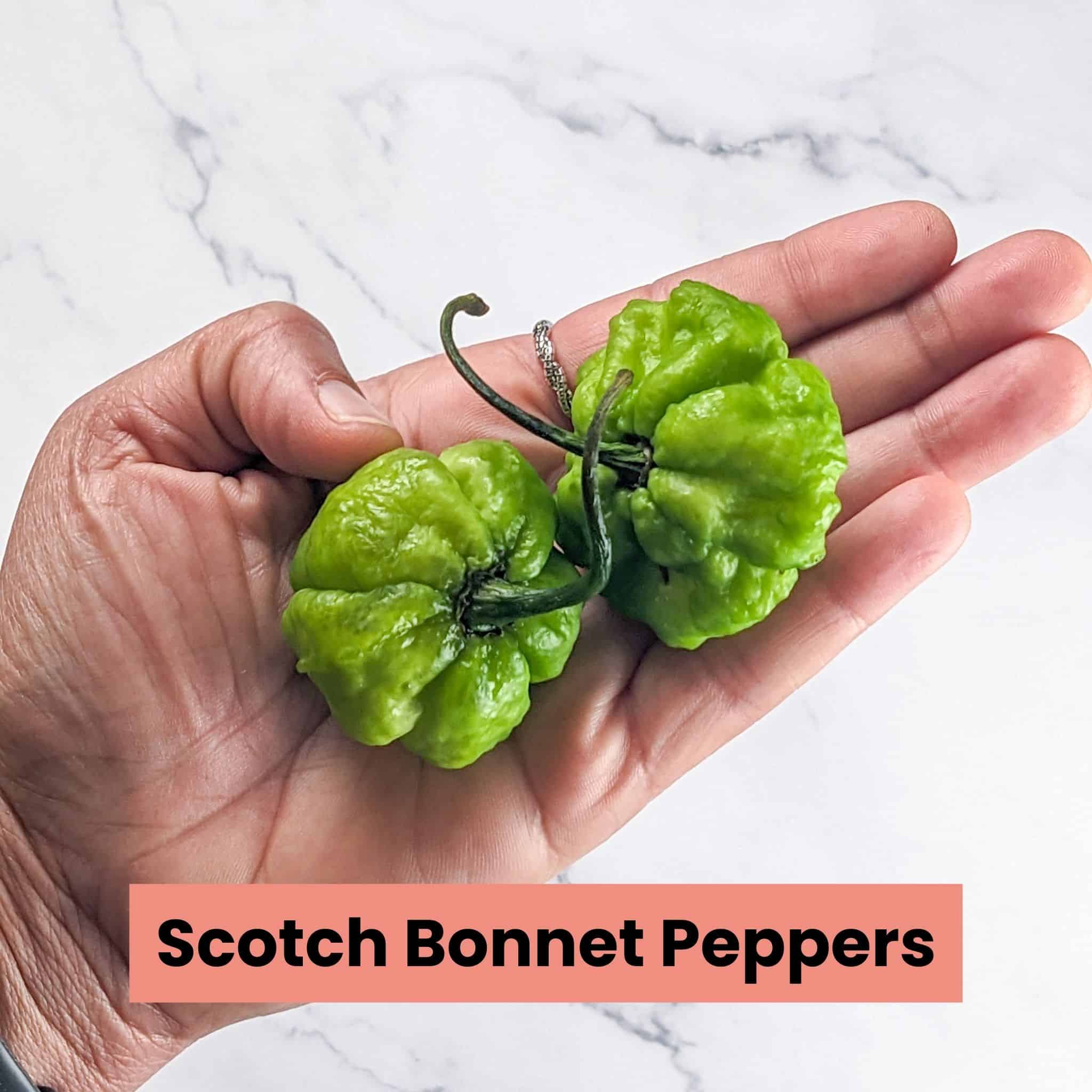
The scotch bonnet pepper is the fiery soul of Haitian Creole tomato sauce, bringing a heat that's both spicy and sweet. Native to the Caribbean, this pepper has been a culinary cornerstone for centuries, thanks to its ability to preserve food and add intense flavor.
It's the go-to for Caribbean dishes because its unique heat elevates every bite without overpowering it. In this Creole Fire-Roasted Tomato Sauce recipe, the scotch bonnet ties the flavors together, delivering that unmistakable punch of authentic Creole cuisine.

This sauce has been used in a variety of ways. For example, you'll find it in my shrimp creole used for Creole Shrimp and Cheesy White Cheddar Risotto as a homage to Shrimp and Grits, and my version of Haitian Shrimp Spaghetti.
Delicious Haitian Creole Sauce Recipes
- Seared Snapper Spicy Creole Sauce and Roasted Vegetables (great for pescatarians!)
- Healthy Haitian-Style Creole Spicy Shrimp Pasta (popular!)
- Spicy Creole Shrimp and White Cheddar Cheese Risotto (my favorite indulgence!)
More Yummy Recipe Ideas
- How to Make Easy Bacon Potato Leek Chowder | Creamy Comfort (popular!)
- Quick Harissa Sauce (Another great spicy red sauce)
Ingredients with Steps
Heat olive oil in a large saucepan over medium heat, then sauté minced garlic and chopped onions until fragrant and translucent. Stir in fresh thyme, ground cloves, parsley, bell pepper, and scotch bonnet pepper, cooking for a few minutes to release their flavors.
Add crushed fire-roasted tomatoes, low-sodium chicken broth, and adobo seasoning, then season with salt and black pepper. Bring the mixture to a boil, reduce the heat to low, and let it simmer uncovered until slightly thickened, stirring occasionally. Adjust seasoning to taste, garnish with parsley, and serve immediately or store for later use.
Culinary Glossary
This section provides concise definitions of key ingredients and techniques to enhance understanding and improve cooking skills related to this recipe.
Every ingredient in this Haitian Creole tomato sauce has a specific role, from building the aromatic base to layering flavors that make the dish bold, vibrant, and uniquely Creole. Understanding these roles will help you create not just this sauce but countless flavorful variations!
- Olive Oil - A liquid fat obtained from pressing olives, widely used in cooking and dressings. It provides a flavorful base for sautéing aromatics, ensuring the flavors develop evenly.
- Fresh Thyme - A fragrant herb with small, earthy leaves often used in Creole and Caribbean cooking, which brings herbal notes that complement the bold spices, adding layers of flavor.
- Ground Cloves - A warm, sweet, and slightly bitter spice made from dried flower buds of the clove tree, adding a subtle warmth and a hint of sweetness, balancing the sauce's bold and spicy flavors. It is commonly used in Haitian cuisine and savory dishes.
- Fresh Parsley - This herb will add freshness and a pop of green in flavor and appearance.
- Bell Pepper - They contribute sweetness and texture, balancing the sauce's heat and acidity.
- Scotch Bonnet Pepper - A small, extremely spicy pepper native to the Caribbean with a fruity undertone, this provides the signature heat and boldness, giving the sauce its authentic Caribbean kick.
- Adobo Seasoning - A seasoning blend of garlic, salt, black pepper, and other spices commonly used in Latin and Caribbean cooking, we use it to enhance the overall flavor with a savory and slightly smoky seasoning. Ever heard of Un Chin Seasoning Co.?
- Fire-Roasted Tomatoes - These are charred over an open flame or roasted, intensifying their sweetness and smoky flavor, and will form the sauce's base, adding rich, smoky depth and natural sweetness.
- Chicken Broth - The seasoned liquid will give this sauce its umami profile.
See the recipe card for quantities below for this delicious Creole sauce!
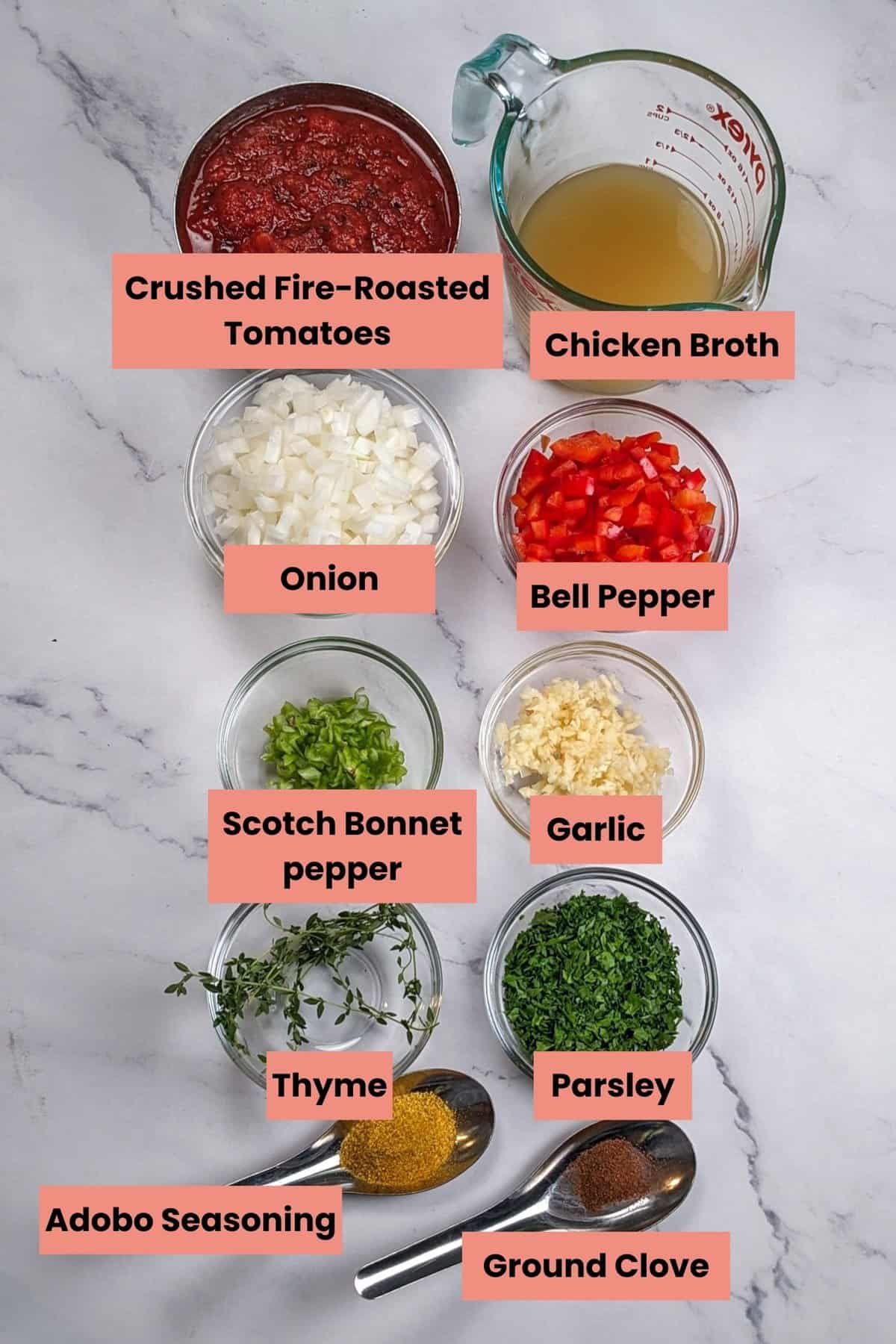
My Review: As a chef with over two decades of experience relying on All-Clad, their D5 Stainless 3-quart saucepan is a kitchen workhorse. The sturdy 3-ply construction ensures even heat distribution for perfect simmering, searing, and everything in between. It's a breeze to clean, goes effortlessly from stovetop to oven, and consistently delivers exceptional results for rice, soups, sauces, and more. This saucepan is a worthy investment if you're looking for durable, versatile, and American-made cookware.
Instructions with Pictures
Follow the instructions and cooking tips below using the step-by-step picture guide.
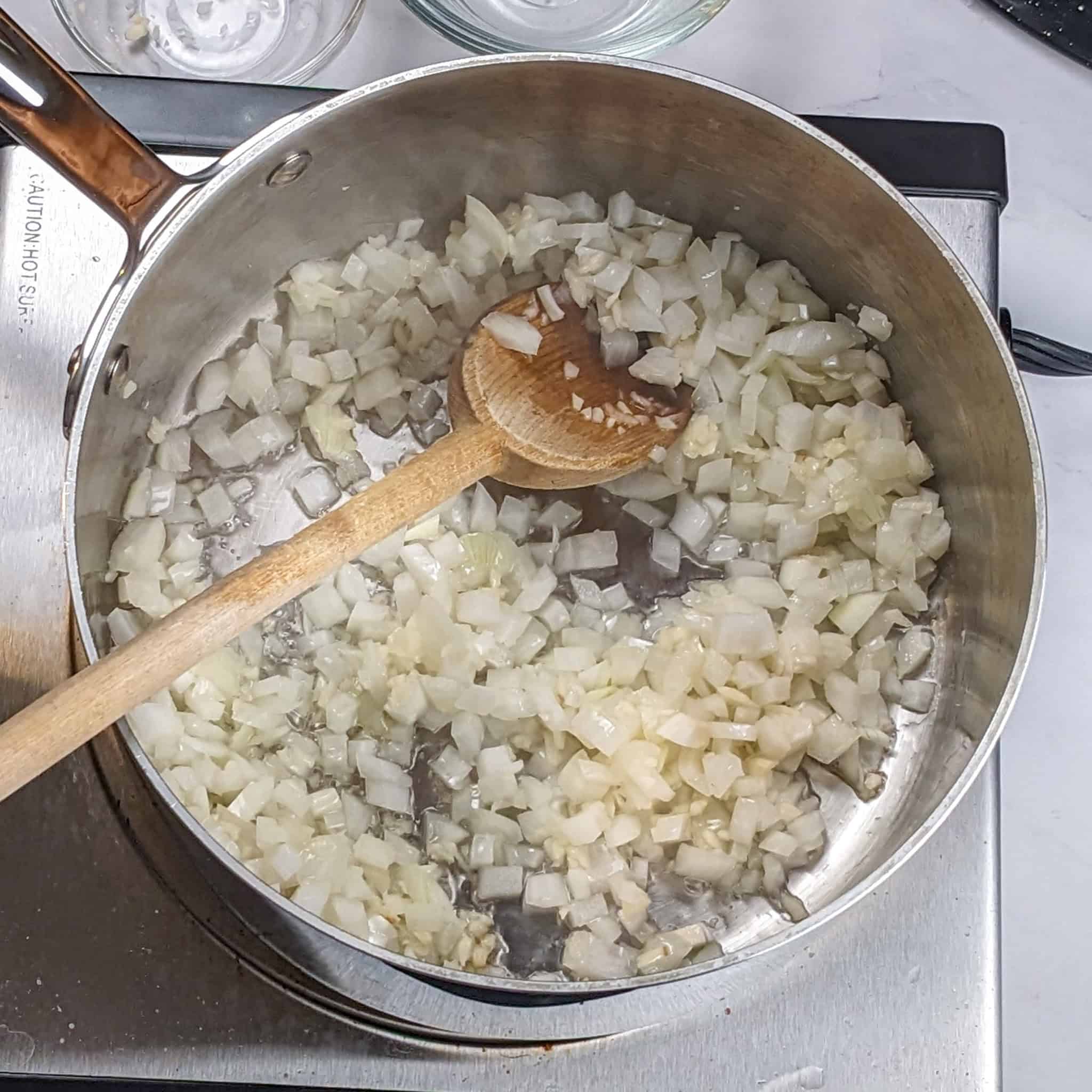
Heat the olive oil in a large saucepan over medium heat. Then, Add the minced garlic and finely chopped onion to the pan. A good sauce base always starts with aromatics such as onion and garlic.
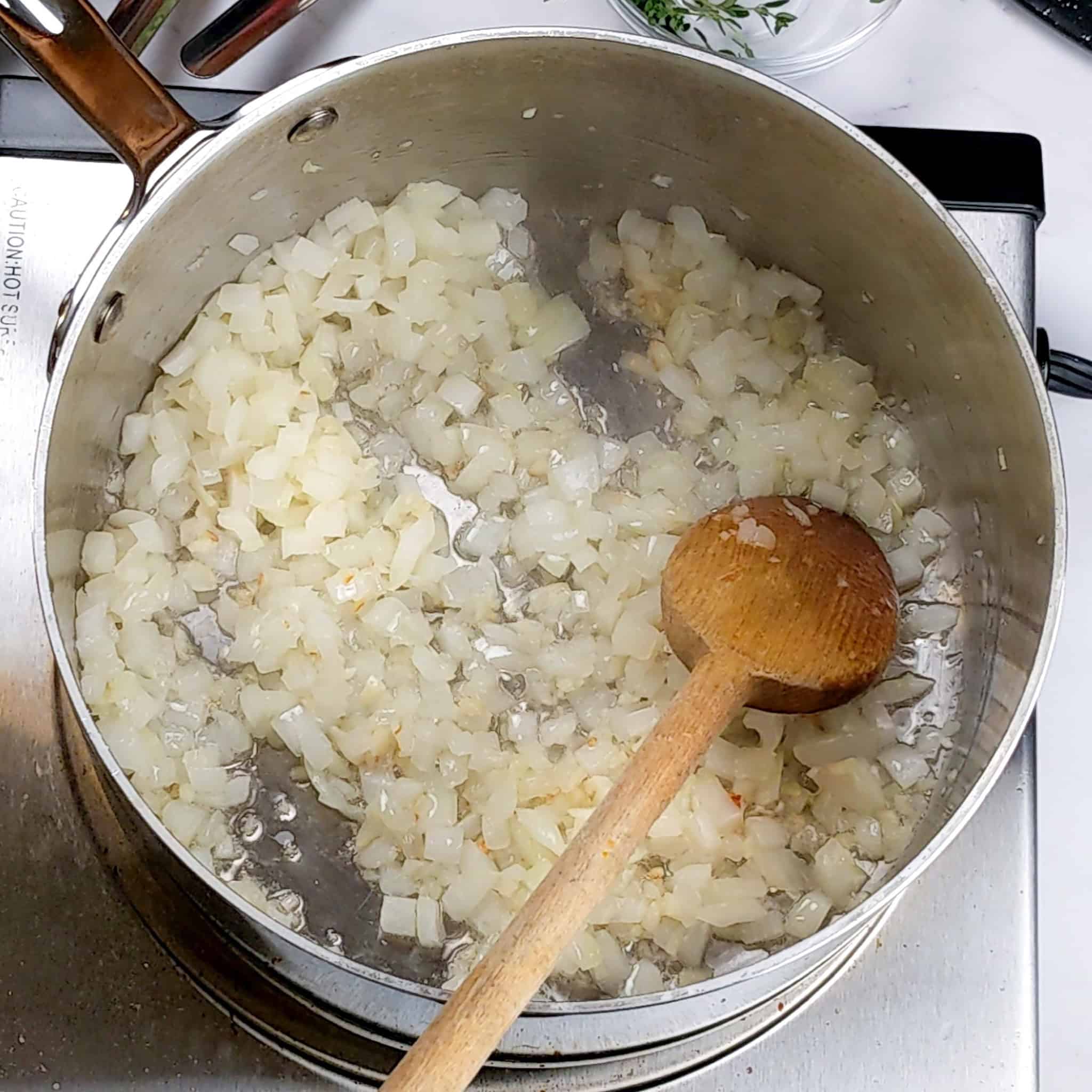
Saute the chopped onion and garlic, stirring frequently, until translucent and fragrant.
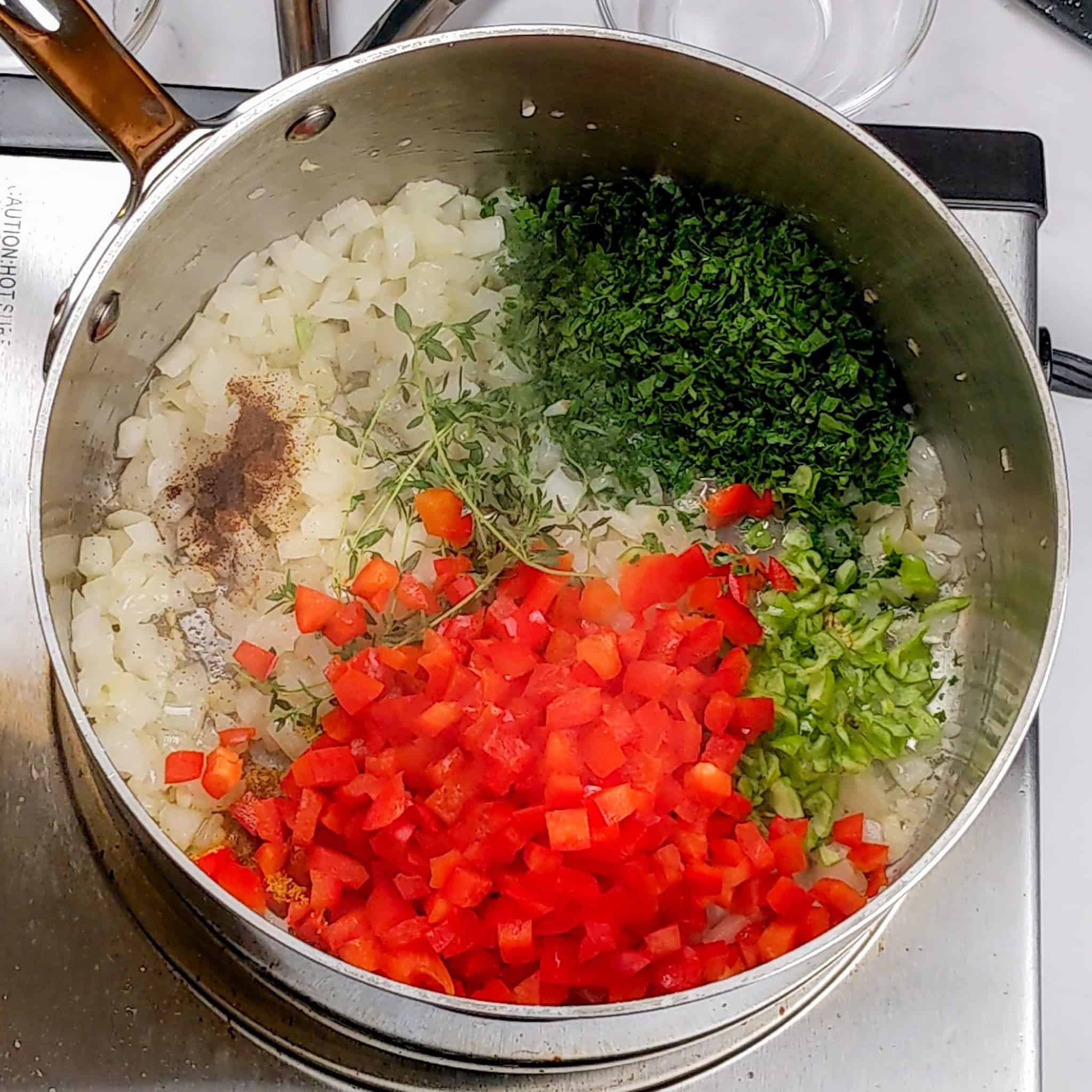
The sauce base is made differently from the traditional Haitian recipe steps. Usually, epis is added at this point. So, stir in the fresh thyme leaves, ground cloves, chopped parsley, and bell pepper. Let them cook for a couple of minutes to release their flavors. Learn about Prepping Sweet Peppers.
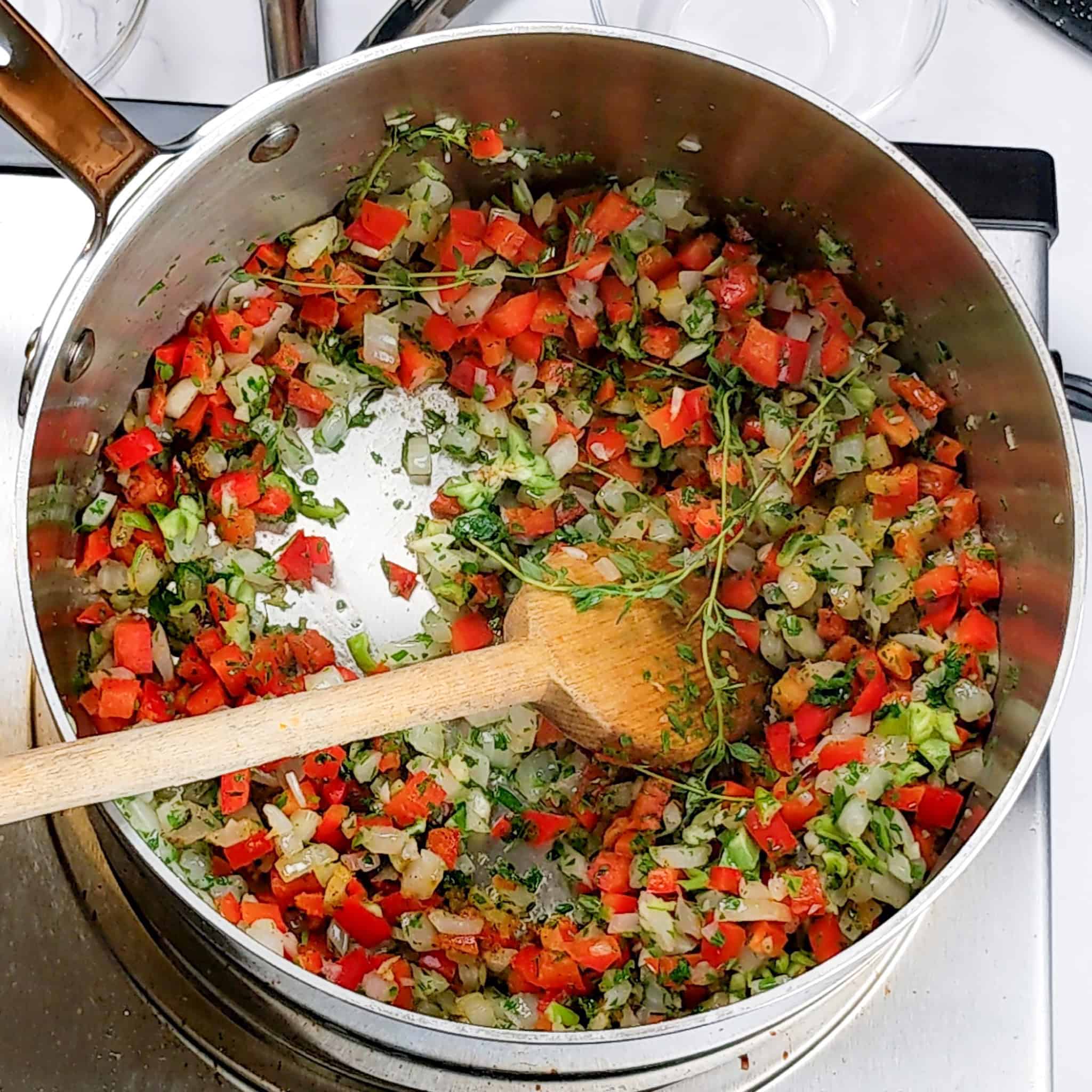
But for those who do not use it daily, this is a perfect way to make it similar to that without making a big batch.

The vegetables are cooked until they are tender.
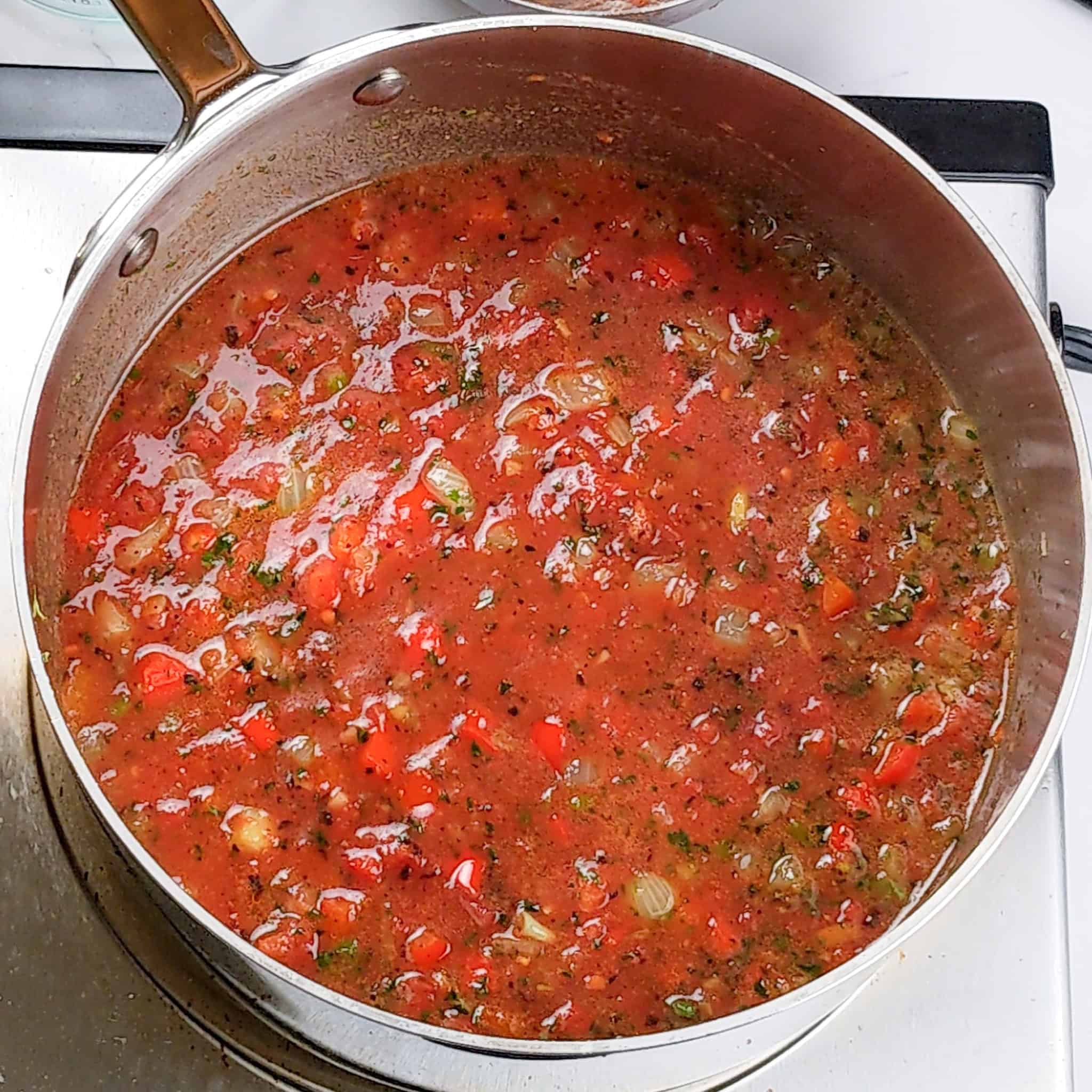
Bring the mixture to a gentle boil, then reduce the heat to low. Let the sauce simmer uncovered, stirring occasionally, until it thickens and the flavors meld. Also, be sure to taste the sauce before it is reduced to get a good idea of what to look for when it is done.
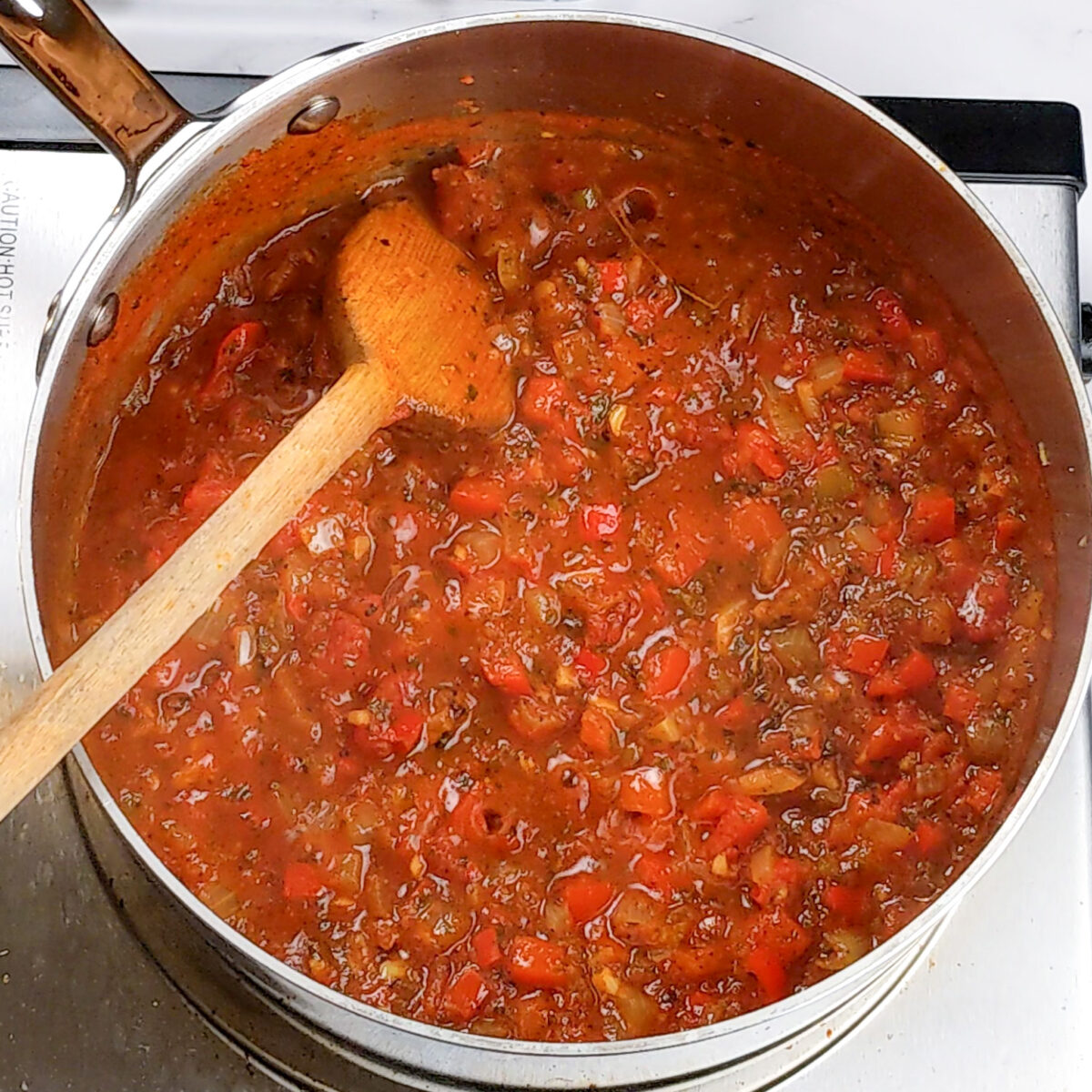
The tomato sauce is ready when all the vegetables are tender, has a slightly darker red color, and has thickened with a balance of acidity and sweetness. If needed, you can adjust it with salt, black pepper, and spices.
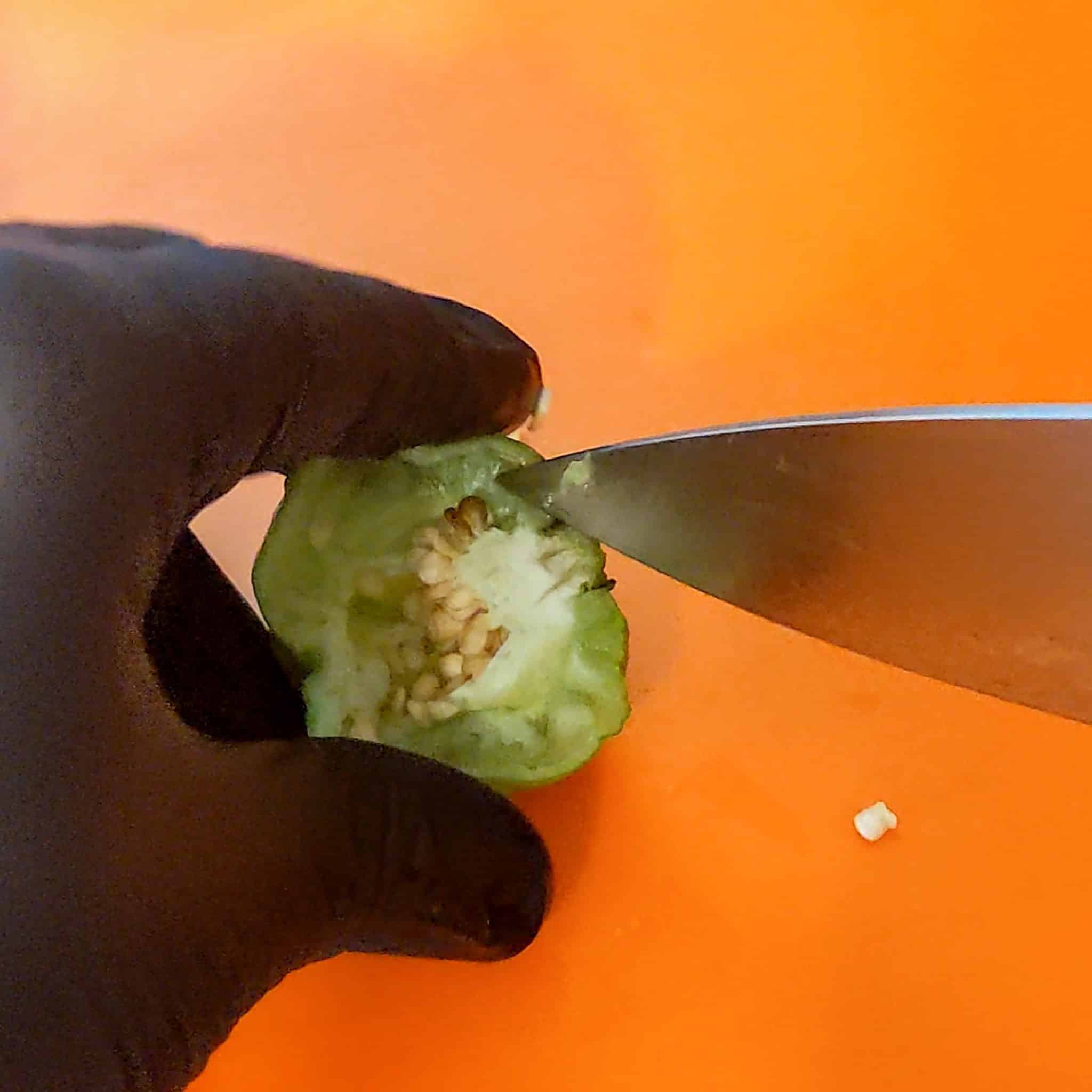
Bonus! Learn how to prep hot peppers for recipes like this.
My Review: The PAUDIN 8-inch Chef Knife is an absolute standout in both sharpness and craftsmanship. It stays incredibly sharp through regular use, making prep work effortless. The high-carbon stainless steel blade showcases PAUDIN’s attention to detail, while the ergonomic handle provides a comfortable grip for extended use. Despite its premium feel, this knife is impressively affordable, offering exceptional quality without the high price tag. That’s why I’ve recently switched all my knives to PAUDIN—they truly deliver on durability, beauty, and performance. If you want a reliable, well-crafted knife at a great value, this is the one to get!
Substitutions
Dairy-Free
- Yay! This recipe is already dairy-free.
Gluten-Free
- Bonus! This sauce is also gluten-free.
Vegetarian
- Low-Sodium Chicken Broth - To make this Creole tomato sauce vegetarian, simply replace the chicken broth with vegetable broth for a flavorful plant-based option.
Convenience
- Olive Oil - Substitute with any neutral oil (like canola, avocado, or sunflower) or melt butter for a richer flavor. [Learn more about cooking with oils.] Or use bacon greese. I do this with my [creole shrimp recipe].
- Fresh Garlic - Use ¼ teaspoon of garlic powder per clove of garlic.
- Fresh Onion - Use 1 tablespoon of onion powder, ½ cup chopped green onions or 2 tablespoons of dried minced onion for 1 medium onion.
- Dried Thyme - To replace 1 teaspoon of dried thyme, use 3 sprigs of fresh thyme. Fresh thyme sprigs are less concentrated than dried thyme, so you'll need more to achieve the same flavor. Strip the leaves from the sprigs before adding them to your dish for the best results.
- Ground Cloves - Use 1 to 2 whole cloves or a pinch of allspice or a small dash of cinnamon as a substitute.
- Fresh Parsley - Substitute ½ bunch of fresh parsley with 1 teaspoon of dried parsley or a small handful of fresh cilantro. Or use bay leaves to add an earthy deep flavor when simmering the sauce.
- Red or Green Bell Pepper - Use chopped celery for crunch or jarred roasted red bell peppers for a similar sweetness.
- Scotch Bonnet Pepper - Replace with finely chopped jalapeño or habanero peppers, or add ¼ teaspoon of red pepper flakes for heat.
- Crushed Fire-Roasted Tomatoes - Use canned diced tomatoes and add ½ teaspoon of smoked paprika for a smoky flavor. But you also switch out the canned for fresh tomatoes. If you are going to use tomato paste, balance the sweetness wtih some the chicken broth and cook it down.
- Low-Sodium Chicken Stock - Replace with equal parts vegetable broth, or use water and add extra seasoning to enhance flavor.
- Adobo Seasoning - Mix equal parts salt, garlic powder, and paprika to mimic the adobo flavor. Or use Creole Seasoning or Cajun seasoning.
Creole Seasoning vs Cajun Seasoning
❓ Some may ask: What's the difference? While both contain similar base ingredients, Creole seasoning typically incorporates more herbs like oregano and thyme for an earthy flavor, while Cajun seasoning emphasizes a fiery kick with a higher proportion of cayenne and other peppers.
Creole Seasoning
An earthy blend of paprika, garlic powder, onion powder, cayenne pepper, black pepper, oregano, and thyme creates a vibrant flavor base for this sauce.
VS

Cajun Seasoning
A fiery blend of paprika, cayenne pepper, garlic powder, and other spices, delivering a bold, spicy kick to any dish.
Change Heat Level - Modify this easy Creole sauce recipe's heat level to your liking and learn more about the Scoville Scale and Chili Pairings.
Try substituting with cayenne pepper a hot sauce (preferably. cayenne pepper, scotch bonnet or habanero base to pair with the clove spice)
Epis Instead of the Onion, Bell Pepper, and Garlic
Many cuisines have their own special blend of aromatics! In Haitian cuisine, this base of onion, bell pepper, and garlic is a key component of a flavorful blend called epis (pronounced "epice").
Think of epis as the Haitian holy trinity, like the Creole holy trinity or the French mirepoix. It's the foundation for countless dishes, adding depth and complexity to stews, soups, sauces, and marinades.
Here's what makes epis special:
- Fresh Herbs - Along with the onion, bell pepper, and garlic, epis typically includes parsley, cilantro, and thyme.
- Spicy Kick - Scotch bonnet peppers are often added for heat, giving Haitian food its characteristic fiery flavor.
- Citrus and Vinegar - Lime juice or sour orange juice, along with vinegar, provide a bright, acidic counterpoint to the richness of the other ingredients.
Epis is usually made in a large batch and stored in the refrigerator or freezer, ready to be used as needed. It's a true workhorse in Haitian cooking, infusing dishes with vibrant flavor and aroma. So, while the specific ingredients may vary slightly from recipe to recipe, the combination of onion, bell pepper, and garlic forms the core of this essential Haitian flavor base.
Variations
- Creamy Spicy Tomato Sauce - To make a creamy variation of this (4 cups yielding) Haitian Creole tomato sauce for fish or chicken breast, stir in ½ cup of heavy cream or coconut milk during the final few minutes of simmering for a rich, velvety texture.
My Review: Of course, I had to get this hand blender in red to match my stand mixer, and I love the convenience and power it brings to my kitchen! With all the included gadgets and easy cleaning (just detach and rinse!), It's become my go-to for everything from smoothies to soups. It's a true "stick blender" with a design that lets me blend even larger quantities of liquid, especially with the slim cup. Highly recommend! If you didn't know already, the KitchenAid Cordless Variable Speed Hand Blender boasts a powerful rechargeable battery that blends up to 25 bowls of soup on a single charge and offers a quick 20-minute charge option for smaller tasks. It's an 8" removable blending arm with a 4-point stainless steel blade that tackles a variety of recipes, from smoothies to soups, while the variable speed trigger switch provides precise control. This versatile hand blender comes with a convenient charger, blending jar, and pan guard, making it a practical and efficient addition to any kitchen.
Equipment
- Large Saucepan - The saucepan is used to sauté the aromatics (garlic, onions, bell peppers) and simmer the sauce, ensuring even heat distribution for optimal flavor development. If you plan to use this sauce for pasta, use a large skillet instead. You can boil the pasta in the skillet, remove it, make your sauce, and add it back.
- Sharp Knife - Essential for finely chopping the garlic, onions, bell peppers, parsley, and scotch bonnet pepper, sharp knives ensure consistent cuts for even cooking.
- Spatula or Wooden Spoon - Used for stirring the sauce as it cooks, helping to evenly combine ingredients and prevent sticking or burning at the bottom of the pan, I highly recommend a good, sturdy silicone spatula.
- Airtight Glass Mason Jar - Storing your sauce in glass jars helps preserve its bold flavors while being eco-friendly, reusable, and safe for both refrigeration and freezing. Bonus!
- Optional Immersion Blender - A hand blender can be used to blend the sauce for a smoother texture, making it perfect for coating fish or chicken while retaining all the rich flavors.

Do not use a cast iron skillet! The acidity in tomato-based sauces can react with the iron in a cast iron skillet, potentially affecting the sauce's taste and the pan's seasoning. But enameled cast iron pans are fine.
Kitchen Must Haves - Find other tools I use here.
Storage
- Refrigerator - Store the cooled Haitian Creole tomato sauce in an airtight container in the fridge for up to 5 days.
- Freezer - Transfer the sauce to a freezer-safe container or zip-top bag, leaving space for expansion, and freeze for up to 3 months.
- Reheating - Warm the sauce over low heat on the stovetop, stirring occasionally, or microwave in 30-second intervals until heated through.
Airtight Food Containers
I interchange glass food storage containers with plastic clipping lids or wooden push-ins. I always suggest glass storage containers because they can be microwaved, they hold food without staining, and the glass keeps the food at a more stable temperature, keeping it fresher and longer.
Try the OXO Good Grips Smart Seal Glass Rectangle Food Storage Containers or the Pyrex Freshlock Glass Food Storage Containers.
My Review: I own over 20 of these Ball Wide Mouth Glass Mason Jars because they’re just that reliable. I use them for everything from storing spices in my cabinet to keeping my wet seasoning blends fresh, organizing meal prep, and even as drinking glasses. Ball’s been around for over 130 years, so it’s easy to trust their quality and consistency. The wide mouth makes them super easy to fill and clean, and the sturdy lids and bands seal tight every time. From canning to just keeping my kitchen organized, these jars never fail me. Fun fact: during World War II, Ball shifted production to make shells and machine parts, showing just how durable their products really are!
Cooking Tips
- Prep Time Management - Chop all your ingredients before you start cooking to keep the process smooth and stress-free-this should take about 10-15 minutes.
- Mastering the Cooking Time - Allow at least 25-30 minutes for cooking the sauce, ensuring the flavors have time to meld and develop during the simmering process.
- Sauté Like a Chef - When sautéing the onions and garlic, use medium heat and stir frequently to avoid burning them; this builds a flavorful base for the sauce.
- Control the Heat Level - For less spice, remove the seeds from the scotch bonnet pepper or use half the pepper, and if you want a milder kick, substitute with jalapeño or red pepper flakes.
- Enhance the Flavor - Let the sauce simmer uncovered for at least 20 minutes to thicken naturally and deepen the flavors; don't rush this step!
- Storage Made Easy - Refrigerate leftovers in an airtight container for up to 5 days or freeze in portions for up to 3 months; this makes it easy to reheat only what you need.
- Substitute Ingredients Smartly - If you're out of fresh herbs, dried thyme or parsley works well in smaller quantities, and canned diced tomatoes with a dash of smoked paprika can replace fire-roasted tomatoes.
- Surprise Ingredient - If you came this far congrats! Add a little bit of lemon juice towards the end to boost the flavor to the next level.
Your Cooking Tips Resource Guide - Become a better home cook with tips to help you cook more efficiently on the Cook's Notebook tab.
Frequently Asked Questions
Yes! To reduce the heat, remove the seeds and membrane from the scotch bonnet pepper or use half the pepper. For a milder substitute, try jalapeño or a pinch of red pepper flakes.
If you don't have fire-roasted tomatoes, you can use canned diced tomatoes and add ½ teaspoon of smoked paprika for a similar smoky flavor.
Refrigerate the sauce in an airtight container for up to 5 days or freeze it for up to 3 months. Reheat on the stovetop or in the microwave when ready to use.
Absolutely! Use an immersion blender directly in the pot, or transfer the sauce to a blender for a smoother consistency, especially if serving with fish or chicken.
This sauce is incredibly versatile! Use it with pasta, grilled chicken, shrimp, roasted vegetables, or even as a dipping sauce for bread or plantains.
Sauce Recipes
Looking for other sauce recipes like this? Try these:
Haitian Recipes
Looking for other Haitian-inspired recipes like this? Try these:
📖 Recipe
Creole Tomato Sauce Recipe | Easy Spicy Haitian-Inspired
Ingredients
- 3 tablespoons olive oil
- 8 cloves garlic minced
- 2 medium onions finely chopped
- 1 teaspoon dried thyme
- ¼ teaspoon ground cloves
- ½ bunch of fresh parsley chopped (plus extra for garnish)
- 1 bell pepper any color, finely chopped
- 1 scotch bonnet pepper finely chopped (seeds removed for less heat, if desired)
- 2 teaspoons adobo seasoning
- Salt and black pepper to taste
- 28 ounce can of crushed fire-roasted tomatoes canned or freshly roasted
- 2 cups low-sodium chicken broth
Equipment
- Silicone Spatula or Wooden Spoon
- Mason Jar Quart
- Immersion Blender Optional
Instructions
- Save time in the kitchen: Read the instructions thoroughly, then gather and prep all your ingredients before cooking! Learn Prepping Tips.
- Prepare the Aromatics: Heat the olive oil in a large saucepan over medium heat. Add the minced garlic and chopped onions, sautéing until fragrant and translucent, about 3-4 minutes.
- Add Herbs and Seasonings: Stir in the fresh thyme leaves, ground cloves, chopped parsley, bell pepper, and scotch bonnet pepper. Cook for another 2-3 minutes, stirring frequently, to release their flavors.
- Incorporate the Tomatoes and Broth: Add the fire-roasted tomatoes and chicken broth. Stir in the adobo seasoning, and season with salt and black pepper to taste. Mix well.
- Simmer the Sauce: Bring the mixture to a gentle boil, then reduce the heat to low. Let the sauce simmer uncovered for 20-25 minutes, stirring occasionally, until it thickens slightly and the flavors meld.
- Adjust Seasoning: Taste the sauce and adjust the salt, black pepper, or adobo seasoning as needed. If you prefer a smoother consistency, you can blend the sauce using an immersion blender. Just remember to remove any herb stems.
- Serve and Garnish: Remove from heat and garnish with additional chopped parsley. Use the sauce immediately or let it cool before storing.
Video
Nutrition
Subscribe to the YouTube Channel
SUBSCRIBE: 👈To my YouTube Channel to Get Notifications of New Videos.
Have a Comment or Question?
If you have a question or comment about this Haitian-inspired Creole recipe, please post it below. You will definitely get a quick response. It also helps our other readers to stay informed. Thanks!




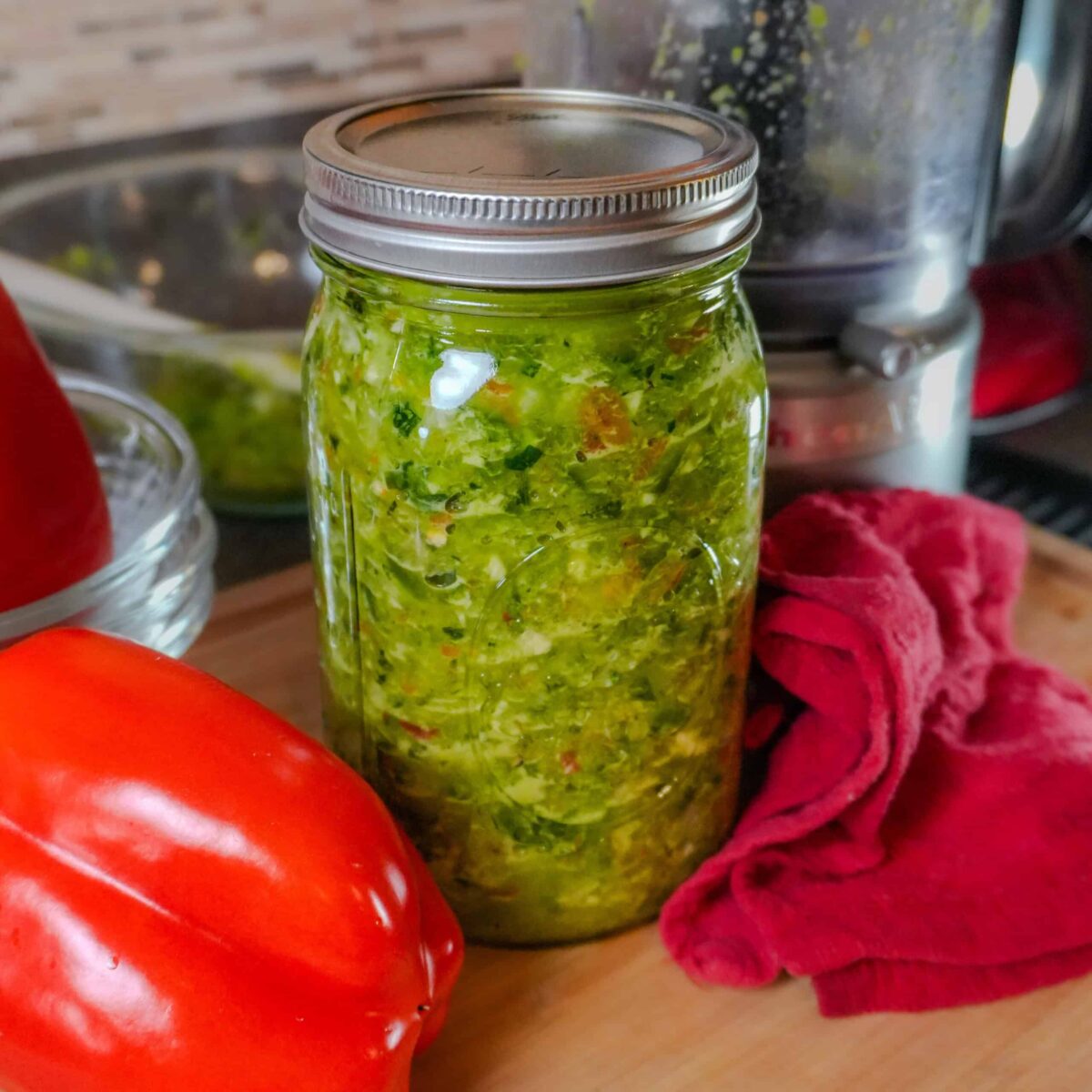
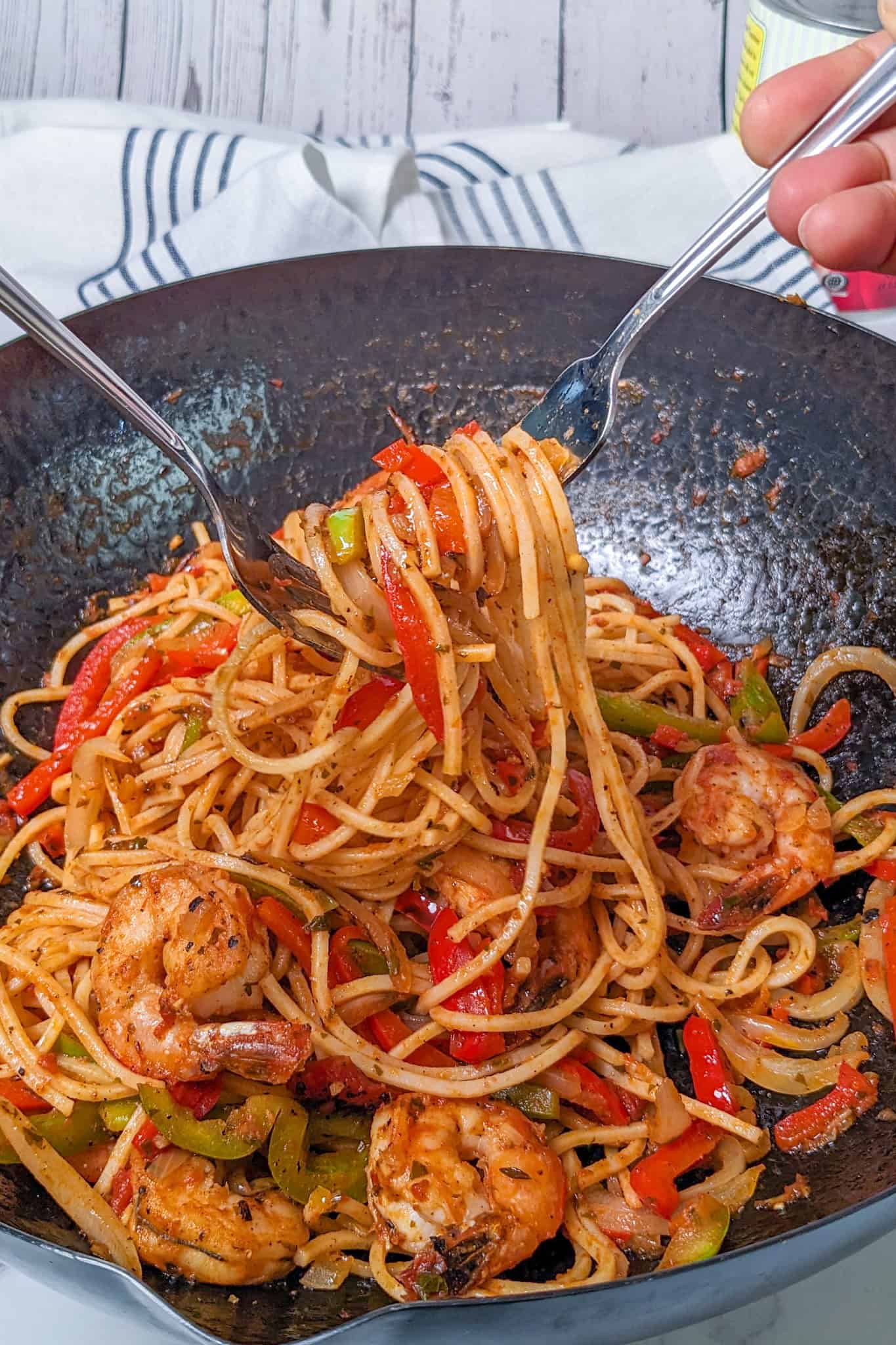

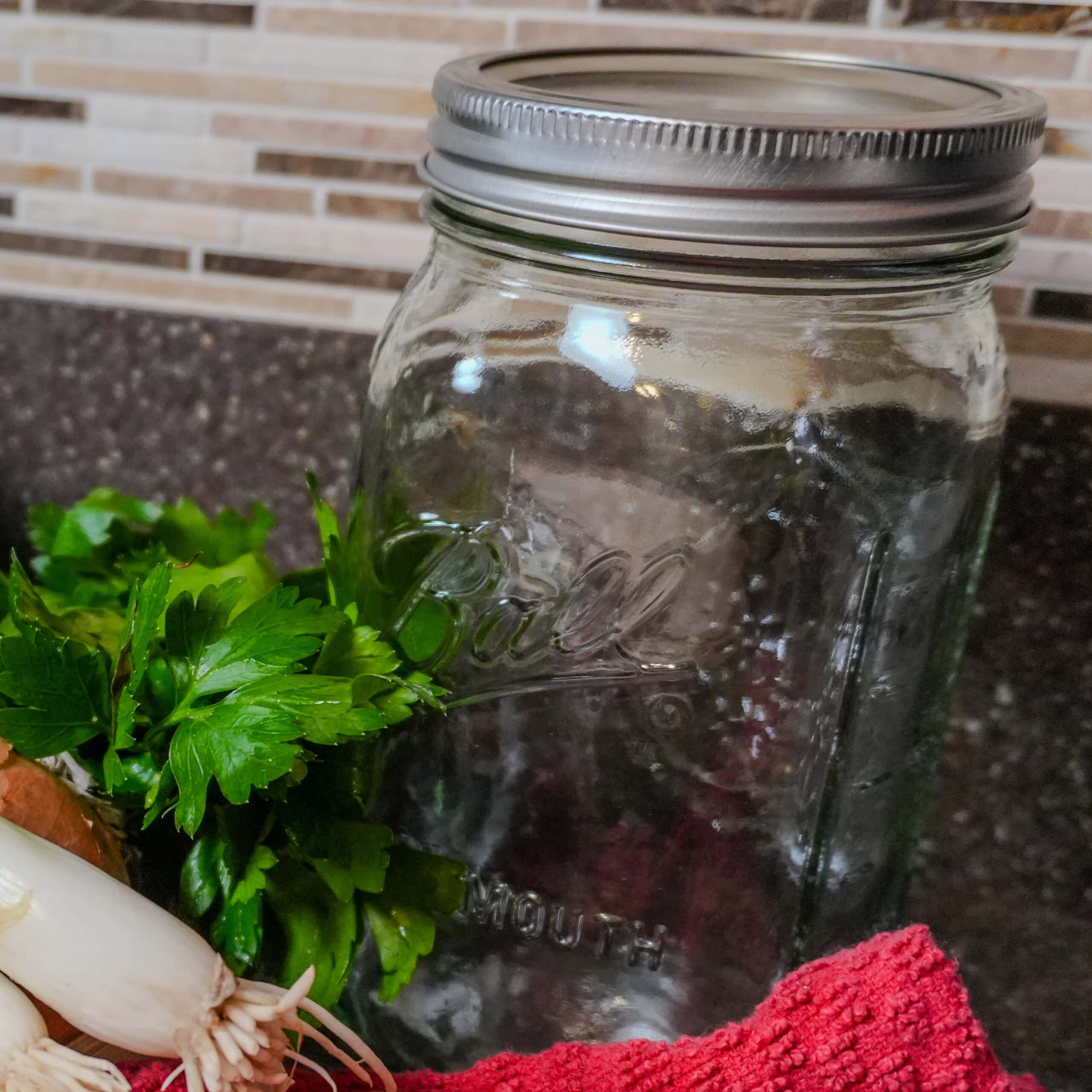


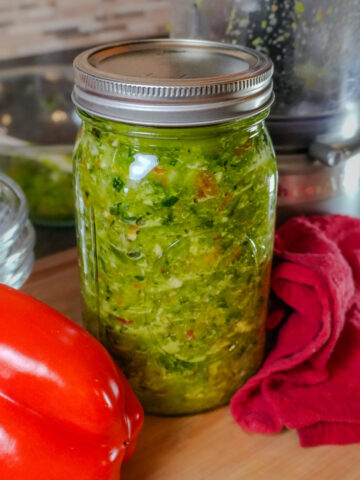
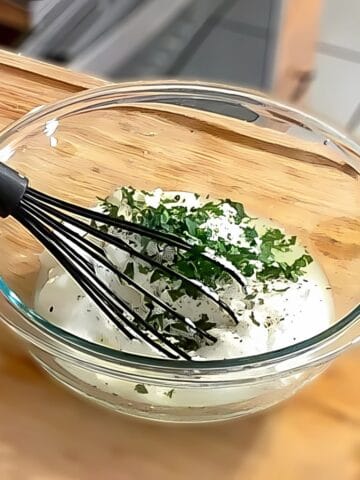


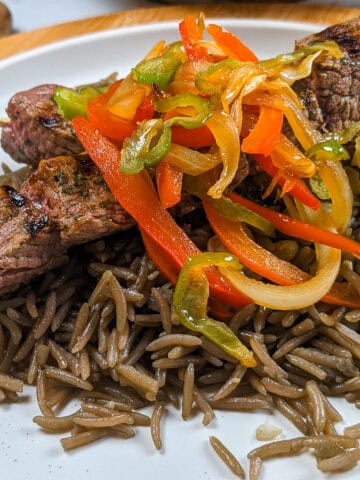
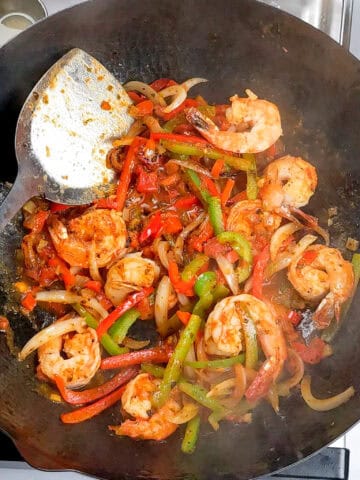
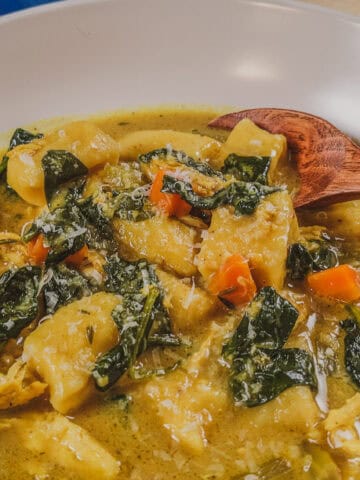
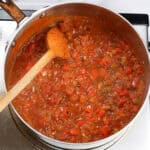


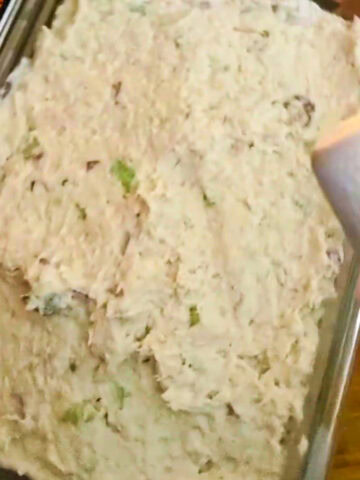

Leave a Reply